In this work Degas has made use of some contemporary ways of making art. It wasn't just the subject matter that was modern - but the techniques used also had a point to make.
The Monotype and the use of pastel
A monotype, which is the technique Degas used for Women on the Terrace of a Cafe, Evening, does not require engraving. It is a unique print taken from a drawing or painting usually made on a glass or metal plate. The medium is often oil paint or printer's ink.
Here's another image The Cafe Concert, which Degas created from a monotype:
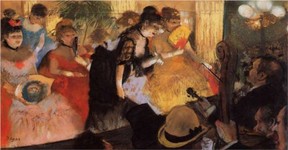 Once the image is made on the receptive surface, the paper or board is pressed onto that surface, manually or with a press. When peeled off the results can be extremely striking and unpredictable.
Once the image is made on the receptive surface, the paper or board is pressed onto that surface, manually or with a press. When peeled off the results can be extremely striking and unpredictable.
Degas' addition of pastel to his print, Women on the Terrace of a Cafe, Evening, adds another layer of spontaneous texture to his 'accidental' creation. The very technique itself seems to reflect the movement and fragmentation of the bustling boulevard. The addition of pastel to the work incorporates the old and the new, and the swiftness and uncertainty of this medium may also be some kind of a moral statement.


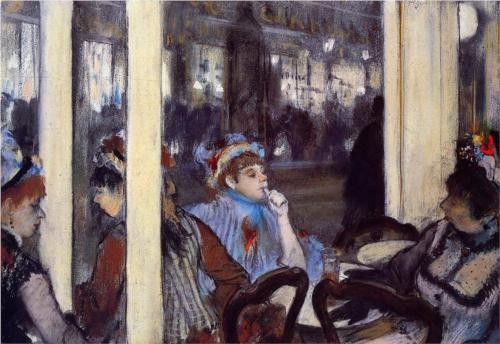
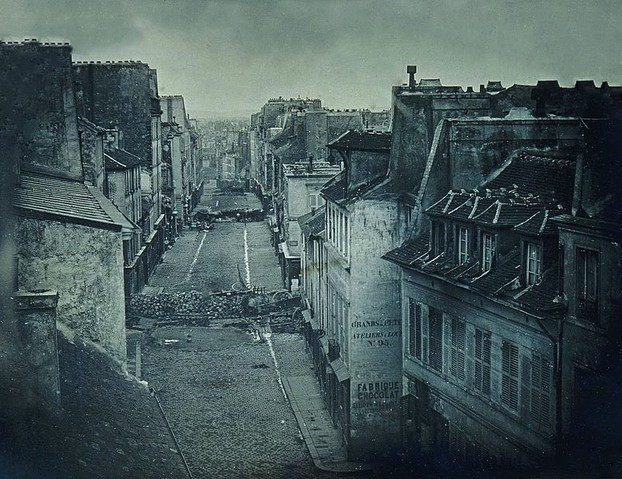
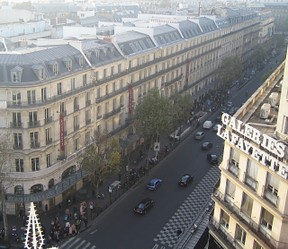 The urban poor were in many cases swept away to the outskirts of town - another aspect of modern life familiar to us today. But in Paris these changes also saw the emergence of prostitution from the police-controlled public brothels and into the boulevard cafes.
The urban poor were in many cases swept away to the outskirts of town - another aspect of modern life familiar to us today. But in Paris these changes also saw the emergence of prostitution from the police-controlled public brothels and into the boulevard cafes.
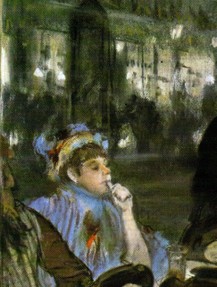 The central character, brighter by contrast to the other three, stares into the middle distance. Perhaps she is waiting for a prospective client, sizing one up, or signalling her availability. Her gesture with her finger is, Clayton suggests, a sexual signal suggesting fellatio. (On the other she might just be biting off a bit of annoying nail whilst eyeing up a prospect...)
The central character, brighter by contrast to the other three, stares into the middle distance. Perhaps she is waiting for a prospective client, sizing one up, or signalling her availability. Her gesture with her finger is, Clayton suggests, a sexual signal suggesting fellatio. (On the other she might just be biting off a bit of annoying nail whilst eyeing up a prospect...) Once the image is made on the receptive surface, the paper or board is pressed onto that surface, manually or with a press. When peeled off the results can be extremely striking and unpredictable.
Once the image is made on the receptive surface, the paper or board is pressed onto that surface, manually or with a press. When peeled off the results can be extremely striking and unpredictable.

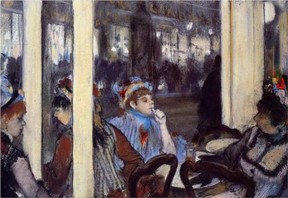
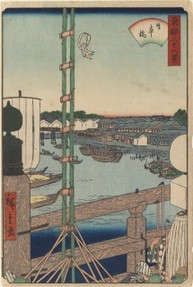
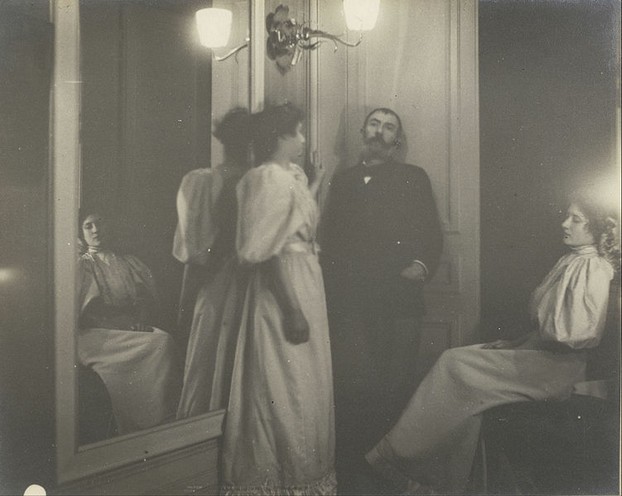
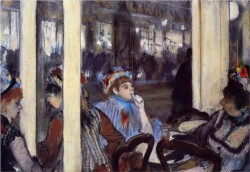

 How to Choose a Walking Cane or Stickon 08/01/2014
How to Choose a Walking Cane or Stickon 08/01/2014
 Michael Miller Fabulous Fabric Swatches for Quilting, Crafts etcon 07/02/2014
Michael Miller Fabulous Fabric Swatches for Quilting, Crafts etcon 07/02/2014
 The Drama of Life in the Rock Poolon 06/08/2014
The Drama of Life in the Rock Poolon 06/08/2014
 The Flâneur - Symbol of Modernity in 19th Century Parison 05/09/2014
The Flâneur - Symbol of Modernity in 19th Century Parison 05/09/2014

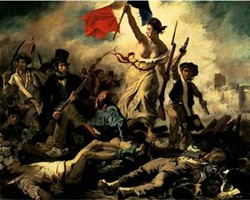
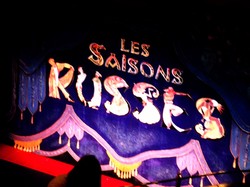
Comments
Mira - you are so right with your comments about composition. And symbolism! :) Thanks for this! :)
I think it's also quite amazing that in the monotype you describe the prostitute is smack at the center of the piece. Those pillars disguise that and also create some movement around her. Trust Degas to come up with interesting compositions -- and in this case, with quite a symbolic one :). Great article, Kathleen!
Thank you Krimagi. That's nice of you :)
Quite a well done piece!
Elias, so generous of you. I really appreciate your lovely comments. Thank you!
Amazing article! So well written and very well documented! Plus, I really like the subject, as well! Thank you for sharing, Kathleen! Thumbs up!
Hi brenda - I love the dancers too. So glad I could share this lesser-known work with you. Thanks for your comment! :)
I am most familiar with Degas' dancers. Some of them hang in the Norton Simon Museum in Pasadena, CA. Thank you for sharing the other works of Degas.